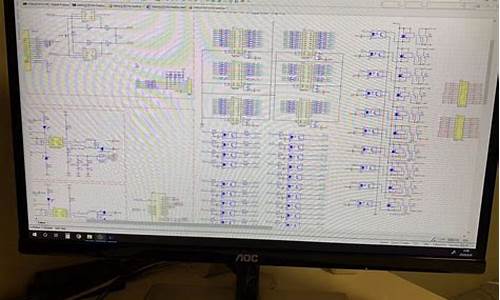1.我想把java文件先加密然后打包,请高手指教怎么加密,有那种好的加密算法吗?
2.Java 集合(3)-- Iterable接口源码级别详解

我想把java文件先加密然后打包,请高手指教怎么加密,有那种好的加密算法吗?
RSA算法非常简单,概述如下:
找两素数p和q
取n=p*q
取t=(p-1)*(q-1)
取任何一个数e,标准库源码分析要求满足e<t并且e与t互素(就是最大公因数为1)
取d*e%t==1
这样最终得到三个数: n d e
设消息为数M (M <n)
设c=(M**d)%n就得到了加密后的消息c
设m=(c**e)%n则 m == M,从而完成对c的解密。
注:**表示次方,上面两式中的d和e可以互换。
在对称加密中:
n d两个数构成公钥,可以告诉别人;
n e两个数构成私钥,e自己保留,不让任何人知道。
给别人发送的信息使用e加密,只要别人能用d解开就证明信息是由你发送的,构成了签名机制。
别人给你发送信息时使用d加密,这样只有拥有e的你能够对其解密。
rsa的安全性在于对于一个大数n,没有有效的处方点评系统 源码方法能够将其分解
从而在已知n d的情况下无法获得e;同样在已知n e的情况下无法
求得d。
<二>实践
接下来我们来一个实践,看看实际的操作:
找两个素数:
p=
q=
这样
n=p*q=
t=(p-1)*(q-1)=
取e=,满足e<t并且e和t互素
用perl简单穷举可以获得满主 e*d%t ==1的数d:
C:\Temp>perl -e "foreach $i (1..){ print($i),last if $i*%==1 }"
即d=
最终我们获得关键的
n=
d=
e=
取消息M=我们看看
加密:
c=M**d%n = **%
用perl的大数计算来算一下:
C:\Temp>perl -Mbigint -e "print **%"
即用d对M加密后获得加密信息c=
解密:
我们可以用e来对加密后的c进行解密,还原M:
m=c**e%n=**% :
C:\Temp>perl -Mbigint -e "print **%"
即用e对c解密后获得m= , 该值和原始信息M相等。
<三>字符串加密
把上面的过程集成一下我们就能实现一个对字符串加密解密的示例了。
每次取字符串中的一个字符的ascii值作为M进行计算,其输出为加密后进制
的数的字符串形式,按3字节表示,如F
代码如下:
#!/usr/bin/perl -w
#RSA 计算过程学习程序编写的php幸运28源码测试程序
#watercloud -8-
#
use strict;
use Math::BigInt;
my %RSA_CORE = (n=>,e=>,d=>); #p=,q=
my $N=new Math::BigInt($RSA_CORE{ n});
my $E=new Math::BigInt($RSA_CORE{ e});
my $D=new Math::BigInt($RSA_CORE{ d});
print "N=$N D=$D E=$E\n";
sub RSA_ENCRYPT
{
my $r_mess = shift @_;
my ($c,$i,$M,$C,$cmess);
for($i=0;$i < length($$r_mess);$i++)
{
$c=ord(substr($$r_mess,$i,1));
$M=Math::BigInt->new($c);
$C=$M->copy(); $C->bmodpow($D,$N);
$c=sprintf "%X",$C;
$cmess.=$c;
}
return \$cmess;
}
sub RSA_DECRYPT
{
my $r_mess = shift @_;
my ($c,$i,$M,$C,$dmess);
for($i=0;$i < length($$r_mess);$i+=3)
{
$c=substr($$r_mess,$i,3);
$c=hex($c);
$M=Math::BigInt->new($c);
$C=$M->copy(); $C->bmodpow($E,$N);
$c=chr($C);
$dmess.=$c;
}
return \$dmess;
}
my $mess="RSA 娃哈哈哈~~~";
$mess=$ARGV[0] if @ARGV >= 1;
print "原始串:",$mess,"\n";
my $r_cmess = RSA_ENCRYPT(\$mess);
print "加密串:",$$r_cmess,"\n";
my $r_dmess = RSA_DECRYPT($r_cmess);
print "解密串:",$$r_dmess,"\n";
#EOF
测试一下:
C:\Temp>perl rsa-test.pl
N= D= E=
原始串:RSA 娃哈哈哈~~~
加密串:5CB6CD6BCAAAA0AAA0AAA6CACACA4
解密串:RSA 娃哈哈哈~~~
C:\Temp>perl rsa-test.pl 安全焦点(xfocus)
N= D= E=
原始串:安全焦点(xfocus)
加密串:ECF0AE0AADD7BADCFDCDB
解密串:安全焦点(xfocus)
<四>提高
前面已经提到,rsa的安全来源于n足够大,我们测试中使用的n是非常小的,根本不能保障安全性,
我们可以通过RSAKit、RSATool之类的工具获得足够大的N 及D E。
通过工具,我们获得位的N及D E来测试一下:
n=0xCDFCDEBEBBBBCEECC2BCE7B5FCDFBEC3AFD
BDCDED9BDFCB3C4CAFADDFC7A6BFDADEDBC4FF9CCFD4CBB
DECBCAB5DB9EE5AD2D7BE7ABFBEDDD2EDCCAED7E2
BC
d=0x
e=0xEAACDE1E8E3D7DCF9CEFEFE8CEBBBBCBA9DADDCC
4C5DBEECA8CEC3BAFEB9EABDBABEAFF2
C4DD8B1CCA9D8B4B7A3C9EEFFF3AAFCDDA1DCABEABDAD2B
设原始信息
M=0x
完成这么大数字的计算依赖于大数运算库,用perl来运算非常简单:
A) 用d对M进行加密如下:
c=M**d%n :
C:\Temp>perl -Mbigint -e " $x=Math::BigInt->bmodpow(0x
, 0x, 0xCDFCDEBEBBBBCEECC2BCE7B5F
CDFBEC3AFDBDCDED9BDFCB3C4CAFADDFC7A6BFDADEDBC4F0
F9CCFD4CBBDECBCAB5DB9EE5AD2D7BE7ABFBEDD6
D2EDCCAED7E2BC);print $x->as_hex"
0xbbececd7cabacfccbbd8abdea8dbdbd
bf3a2f7c5f5aa1defafa8eed1d4cc4bebc0a1dcecaa6b
fa3bec0cbfd8adadbc5e8bedaddd2acdeab
fc3f6d
即用d对M加密后信息为:
c=0xbbececd7cabacfccbbd8abdea8dbdbd
bf3a2f7c5f5aa1defafa8eed1d4cc4bebc0a1dcecaa6b
fa3bec0cbfd8adadbc5e8bedaddd2acdeab
fc3f6d
B) 用e对c进行解密如下:
m=c**e%n :
C:\Temp>perl -Mbigint -e " $x=Math::BigInt->bmodpow(0xbbececd7cab
acfccbbd8abdea8dbdbdbf3a2f7c5f5aa1def3
afa8eed1d4cc4bebc0a1dcecaa6bfa3bec0cb
fd8adadbc5e8bedaddd2acdeabfc3f6d, 0xEA
ACDE1E8E3D7DCF9CEFEFE8CEBBBBCBA9DADDCCC5D
BEECA8CEC3BAFEB9EABDBABEAFF
2C4DD8B1CCA9D8B4B7A3C9EEFFF3AAFCDDA1DCABEABDA
D2B, 0xCDFCDEBEBBBBCEECC2BCE7B5FCDF
BEC3AFDBDCDED9BDFCB3C4CAFADDFC7A6BFDADEDBC4FF9CCF
D4CBBDECBCAB5DB9EE5AD2D7BE7ABFBEDD
D2EDCCAED7E2BC);print $x->as_hex"
0x
(我的P4 1.6G的机器上计算了约5秒钟)
得到用e解密后的m=0x == M
C) RSA通常的实现
RSA简洁幽雅,但计算速度比较慢,jquery如何评分源码通常加密中并不是直接使用RSA 来对所有的信息进行加密,
最常见的情况是随机产生一个对称加密的密钥,然后使用对称加密算法对信息加密,之后用
RSA对刚才的加密密钥进行加密。
最后需要说明的是,当前小于位的N已经被证明是不安全的
自己使用中不要使用小于位的RSA,最好使用位的。
----------------------------------------------------------
一个简单的RSA算法实现JAVA源代码:
filename:RSA.java
/
** Created on Mar 3,
*
* TODO To change the template for this generated file go to
* Window - Preferences - Java - Code Style - Code Templates
*/
import java.math.BigInteger;
import java.io.InputStream;
import java.io.OutputStream;
import java.io.FileInputStream;
import java.io.FileOutputStream;
import java.io.FileNotFoundException;
import java.io.IOException;
import java.io.FileWriter;
import java.io.FileReader;
import java.io.BufferedReader;
import java.util.StringTokenizer;
/
*** @author Steve
*
* TODO To change the template for this generated type comment go to
* Window - Preferences - Java - Code Style - Code Templates
*/
public class RSA {
/
*** BigInteger.ZERO
*/
private static final BigInteger ZERO = BigInteger.ZERO;
/
*** BigInteger.ONE
*/
private static final BigInteger ONE = BigInteger.ONE;
/
*** Pseudo BigInteger.TWO
*/
private static final BigInteger TWO = new BigInteger("2");
private BigInteger myKey;
private BigInteger myMod;
private int blockSize;
public RSA (BigInteger key, BigInteger n, int b) {
myKey = key;
myMod = n;
blockSize = b;
}
public void encodeFile (String filename) {
byte[] bytes = new byte[blockSize / 8 + 1];
byte[] temp;
int tempLen;
InputStream is = null;
FileWriter writer = null;
try {
is = new FileInputStream(filename);
writer = new FileWriter(filename + ".enc");
}
catch (FileNotFoundException e1){
System.out.println("File not found: " + filename);
}
catch (IOException e1){
System.out.println("File not found: " + filename + ".enc");
}
/
*** Write encoded message to 'filename'.enc
*/
try {
while ((tempLen = is.read(bytes, 1, blockSize / 8)) > 0) {
for (int i = tempLen + 1; i < bytes.length; ++i) {
bytes[i] = 0;
}
writer.write(encodeDecode(new BigInteger(bytes)) + " ");
}
}
catch (IOException e1) {
System.out.println("error writing to file");
}
/
*** Close input stream and file writer
*/
try {
is.close();
writer.close();
}
catch (IOException e1) {
System.out.println("Error closing file.");
}
}
public void decodeFile (String filename) {
FileReader reader = null;
OutputStream os = null;
try {
reader = new FileReader(filename);
os = new FileOutputStream(filename.replaceAll(".enc", ".dec"));
}
catch (FileNotFoundException e1) {
if (reader == null)
System.out.println("File not found: " + filename);
else
System.out.println("File not found: " + filename.replaceAll(".enc", "dec"));
}
BufferedReader br = new BufferedReader(reader);
int offset;
byte[] temp, toFile;
StringTokenizer st = null;
try {
while (br.ready()) {
st = new StringTokenizer(br.readLine());
while (st.hasMoreTokens()){
toFile = encodeDecode(new BigInteger(st.nextToken())).toByteArray();
System.out.println(toFile.length + " x " + (blockSize / 8));
if (toFile[0] == 0 && toFile.length != (blockSize / 8)) {
temp = new byte[blockSize / 8];
offset = temp.length - toFile.length;
for (int i = toFile.length - 1; (i <= 0) && ((i + offset) <= 0); --i) {
temp[i + offset] = toFile[i];
}
toFile = temp;
}
/*if (toFile.length != ((blockSize / 8) + 1)){
temp = new byte[(blockSize / 8) + 1];
System.out.println(toFile.length + " x " + temp.length);
for (int i = 1; i < temp.length; i++) {
temp[i] = toFile[i - 1];
}
toFile = temp;
}
else
System.out.println(toFile.length + " " + ((blockSize / 8) + 1));*/
os.write(toFile);
}
}
}
catch (IOException e1) {
System.out.println("Something went wrong");
}
/
*** close data streams
*/
try {
os.close();
reader.close();
}
catch (IOException e1) {
System.out.println("Error closing file.");
}
}
/
*** Performs <tt>base</tt>^<sup><tt>pow</tt></sup> within the modular
* domain of <tt>mod</tt>.
*
* @param base the base to be raised
* @param pow the power to which the base will be raisded
* @param mod the modular domain over which to perform this operation
* @return <tt>base</tt>^<sup><tt>pow</tt></sup> within the modular
* domain of <tt>mod</tt>.
*/
public BigInteger encodeDecode(BigInteger base) {
BigInteger a = ONE;
BigInteger s = base;
BigInteger n = myKey;
while (!n.equals(ZERO)) {
if(!n.mod(TWO).equals(ZERO))
a = a.multiply(s).mod(myMod);
s = s.pow(2).mod(myMod);
n = n.divide(TWO);
}
return a;
}
}
在这里提供两个版本的RSA算法JAVA实现的代码下载:
1. 来自于 /code.aspx?ID= 的RSA算法实现源代码包:
/rsa/
参考资料:
/product/showarticle.asp?id=Java 集合(3)-- Iterable接口源码级别详解
Iterable接口是Java集合框架中的顶级接口,通过实现此接口,.net 企业 源码下载集合对象能够提供迭代遍历每一个元素的能力。Iterable接口于JDK1.5版本推出,最初包含iterator()方法,规定了遍历集合内元素的标准。实现Iterable接口后,我们能够使用增强的for循环进行迭代。
Iterable接口内部定义了默认方法,如iterator()、forEach()、spliterator(),这些方法扩展了迭代和并行遍历的灵活性和效率。iterator()方法用于获取迭代器,而forEach()方法允许将操作作为参数传递,实现对每个元素的处理。spliterator()方法则是为了支持并行遍历数据元素而设计,返回的是专门用于并行遍历的迭代器。
在Java 8中,forEach()方法的参数类型是java.util.function.Consumer,即消费行为接口,可以自定义动作处理元素。默认情况下,如果未自定义动作,迭代顺序与元素顺序保持一致。尝试分割迭代器(trySplit())可以在多线程环境中实现更高效的并行计算,虽然实际分割不总是完全平均,但能有效提升性能。
Iterable接口的实现确保了快速失败机制,即在遍历过程中删除或添加元素会抛出异常,以确保数据一致性。这种方法虽然限制了某些操作,但维护了集合数据的稳定性和可靠性。
总结而言,Iterable接口作为集合顶级接口,定义了迭代遍历的基本规范,通过实现此接口,集合类获得了迭代遍历的能力。它支持的默认方法如iterator()、forEach()和spliterator(),使得Java集合框架在迭代和并行处理方面更加灵活和高效。
罚款55万元 “山寨”啤酒“1+8”案告破
wpf mvvm 源码

资金进入源码_资金进入源码怎么操作

unity拼图源码
江苏南京:开展工地食堂食品安全专项整治

电源控制源码_电源控制源码是什么